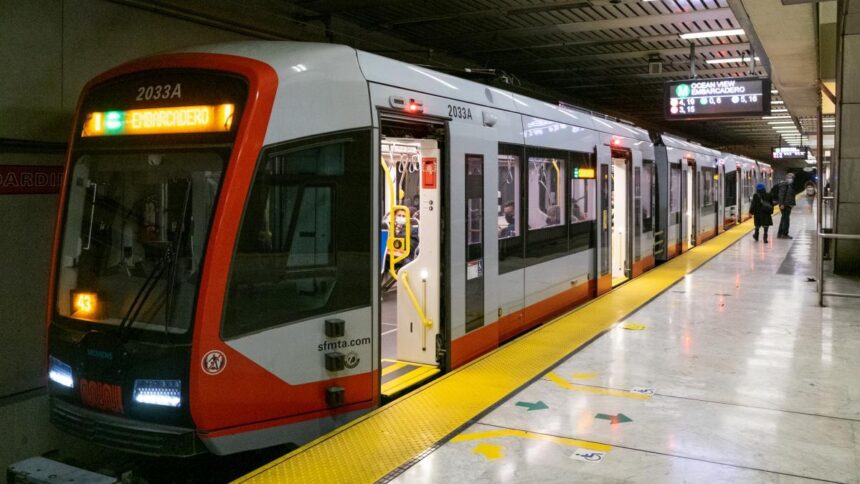In a recent announcement, the San Francisco Municipal Transportation Agency (SFMTA) celebrated significant milestones in the ongoing Geary Boulevard improvement project, highlighting advancements in transportation infrastructure aimed at enhancing safety and accessibility. However, not everyone is on board with the agency’s optimistic portrayal of progress. Local merchants along the corridor have voiced their concerns, deeming the agency’s claims premature and dismissive of the challenges they face amid construction disruptions. As the debate unfolds, both sides strive to articulate their visions for Geary Boulevard’s future, raising questions about the balance between urban development and the livelihoods of those who call the area home.
SFMTA Celebrates Progress on Geary Corridor Improvements Amid Merchant Concerns
The San Francisco Municipal Transportation Agency (SFMTA) recently highlighted significant milestones achieved in the Geary Corridor improvement project, boasting enhanced public transit accessibility and upgraded pedestrian facilities. As part of the ongoing initiative, the agency has implemented a range of features aimed at improving commuter experiences, including:
- Dedicated Bus Lanes: Designed to expedite transit services and reduce congestion.
- Improved Crosswalks: Enhanced visibility and safety for pedestrians.
- Updated Traffic Signals: Optimized timings to favor bus and pedestrian movements.
However, many local merchants remain skeptical, labeling the SFMTA’s celebration as premature. Business owners voice concerns over potential disruptions caused by ongoing construction and modifications to street layouts. They argue that while improvements may benefit transit users, the immediate impact on foot traffic and access to their stores cannot be overlooked. A recent survey conducted by a local business association revealed:
| Merchant Satisfaction | Concerns |
|---|---|
| 45% Satisfied | 55% Expressed Concerns |
| 30% Support Improvements | 70% Request Consideration of Business Impact |
Balancing Innovation and Local Business Needs: Recommendations for SFMTA
As the San Francisco Municipal Transportation Agency (SFMTA) pushes forward with innovative projects like the Geary corridor enhancements, it is essential to engage with local businesses to ensure that their needs are adequately addressed. A collaborative approach that integrates community feedback can help mitigate the perceived disconnect between urban development efforts and the realities faced by merchants. To foster this collaboration, the SFMTA should consider implementing the following strategies:
- Regular Town Hall Meetings: Organize frequent community forums to discuss ongoing projects and gather valuable input from local business owners.
- Feedback Mechanisms: Create online platforms for merchants to provide continuous feedback on current initiatives and proposed changes.
- Business Assistance Programs: Develop resources to support struggling local businesses during transitions, including marketing support and financial assistance.
Additionally, measuring the impact of innovation on local commerce is crucial for aligning development with community interests. Implementing a data-driven approach can provide insights into the effects of transportation changes on local businesses. The creation of a transparent reporting system would allow stakeholders to assess performance metrics related to project outcomes. Considerations for this system could include:
| Metric | Description |
|---|---|
| Foot Traffic | Measure changes in pedestrian and shopper volume pre- and post-project implementation. |
| Sales Performance | Track sales figures from local businesses before and after changes to understand economic impact. |
| Business Retention Rates | Monitor the longevity and closure rates of businesses within project areas to gauge overall health. |
Merchants Demand Greater Engagement and Support During Geary Project Implementation
As the Geary project progresses, local merchants are increasingly vocal about their need for enhanced support and engagement from the SFMTA. Business owners argue that while the agency touts project milestones, the negative impact on storefronts and customer access cannot be overlooked. They have expressed concerns regarding how the construction is altering foot traffic, with many feeling that the current communication efforts fall short in addressing their needs. Key points raised by the merchants include:
- Timely Updates: A demand for regular communication about project phases and expected disruptions.
- Business Impact Assessments: Requests for studies that investigate the effects of construction on sales and patronage.
- Increased Support Services: A call for resources to help businesses adapt to changing circumstances, including marketing support and financial aid.
Moreover, merchants are advocating for a dedicated channel where they can voice their concerns and receive immediate feedback. Many have proposed that the SFMTA establish advisory meetings that include merchant representatives, ensuring that their perspectives are incorporated into ongoing project discussions. This collaboration could pave the way for more effective strategies that prioritize both infrastructural advancement and small business vitality. A recent table summarizing merchant feedback highlights the areas of greatest concern:
| Concern Area | Merchant Feedback |
|---|---|
| Foot Traffic | Decreased customer visits by up to 30% |
| Communication | Lack of timely information on project changes |
| Access to Stores | Difficulty in reaching businesses due to detours |
The Way Forward
In summary, while the San Francisco Municipal Transportation Agency celebrates the achievements of the Geary project, local merchants remain skeptical, voicing concerns about the potential long-term impact on their businesses. As the city navigates the complexities of urban development and transportation improvements, finding common ground between municipal goals and the livelihoods of small business owners will be essential. Moving forward, stakeholders on both sides will need to engage in meaningful dialogue to address the diverse needs of the community, ensuring that the anticipated benefits of the Geary project do not come at the expense of the local economy. As this story continues to unfold, the ultimate success of the project will hinge on the agency’s ability to balance infrastructure advancement with the support of those who call the area home.









